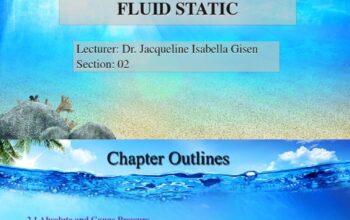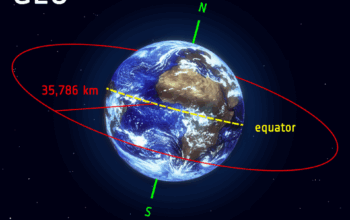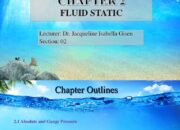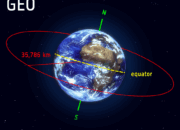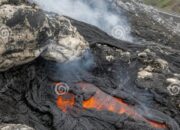The Earth, a vast and intricate orb, emanates a subtle yet profound resonance that has intrigued scientists for decades. This phenomenon, often referred to as the “Earth’s hum,” is not just an ethereal whisper but a cacophony of geological secrets waiting to be deciphered. What might we hear if we attuned our senses to this planetary symphony? Can the study of these inaudible murmurs provide revelations about the enigmas hidden deep within our world? In seeking answers, we embark on a meticulous exploration of geophysical phenomena, employing novel methodologies to understand the unseen and often overlooked aspects of our planet’s interior.
The groundwork for understanding Earth’s hum was laid through rigorous scientific inquiry into seismic waves and their interactions with Earth’s layers. These waves traverse through different mediums, attenuating or amplifying based on geological variances. The hum is primarily generated by oscillations that are typically imperceptible to the naked ear; however, sophisticated detection technologies allow for the analysis of these minute vibrations, revealing much about Earth’s lithosphere, asthenosphere, and beyond. What is particularly striking is how these oscillations can transcend geographic and temporal boundaries, leading to a global phenomenon that invites further scrutiny.
One of the most compelling aspects of Earth’s hum is its correlation with tectonic activity. As tectonic plates move, they generate stresses that manifest as seismic waves. Natural events such as earthquakes, volcanic eruptions, and even human activities contribute to this auditory tapestry. The hum serves as an invaluable tool for seismologists seeking to predict geological events, improve safety measures in populated areas, and ultimately unravel the dynamic processes that govern our planet’s behavior. Yet, one must ponder: Could these vibrations possess a deeper significance, perhaps hinting at the interactions among Earth’s fluids, gases, and solids? This perspective posits that there’s much more to discover beyond our current understanding.
Furthermore, the specialized field of paleomagnetism offers fertile ground for exploration of Earth’s hum. By examining the faint magnetic signals preserved in ancient rocks, scientists can glean insights into past geodynamic processes. This interplay between Earth’s hum and ancient magnetic fields suggests a chronology of tectonic events, including continental drift and sea-floor spreading. Would the hum allow us to peer even further back into geological time, providing clues about planetary evolution that have remained obscured? This tantalizing prospect may challenge researchers to develop more advanced techniques for interpreting these intertwined phenomena.
In a similar vein, the pursuit of understanding the hum extends to the impact of anthropogenic activities on Earth’s natural frequencies. The incessant sounds generated by industry, transportation, and urbanization overshadow the delicate whispers of our planet. Interestingly, studies suggest that such human-induced noise may inadvertently mask the Earth’s hum, complicating efforts to analyze these natural frequencies accurately. This phenomenon raises a pertinent question: Can we disentangle the human contribution from the geophysical signals? Addressing this challenge is critical for preserving the integrity of our observational data and ensuring accurate interpretations in the face of growing anthropogenic influence.
Additionally, understanding the Earth’s hum provides a unique context for interdisciplinary collaboration, merging geophysics with fields such as ecology and climate science. The vibrations traversing through Earth’s layers have the potential to elucidate the health of various ecosystems, since many biological processes also produce vibrational signatures. Consequently, the symbiotic relationship between geological and biological systems prompts inquiries into how environmental changes might influence both the planet’s hum and the vibrational patterns of biological entities. Such studies could yield transformative insights into the interconnectedness of life and geology—a delicate balance that warrants comprehensive investigation.
As researchers delve deeper into the intricacies of Earth’s hum, the challenge of interpreting the data collected from various methodologies becomes increasingly apparent. The need for sophisticated analytical frameworks capable of discerning subtle variations in frequency and amplitude is paramount. Recent advancements in machine learning and artificial intelligence promise to propel this field forward, enabling scientists to sift through complex datasets to extract meaningful interpretations of the planet’s hidden depths. Yet, one must consider: Are we prepared for the revelations that may arise from such technologies? What ethical considerations accompany the knowledge that could emerge from the Earth’s whisper?
Furthermore, technology advancements have led to the development of seismic sensors that operate autonomously, continuously monitoring geological changes in real-time. This innovation offers an intriguing possibility: Could we establish a “listening network” that aggregates data from multiple locations, providing a comprehensive overview of Earth’s hum? Such an interconnected system could revolutionize our understanding of the planet’s dynamics, enabling researchers to identify patterns and correlations that were previously undetectable.
Ultimately, the study of Earth’s hum transcends mere auditory interest; it constitutes a vital frontier in our quest to comprehend the planet. Its resonance offers not only clues to the geological processes inherent within but also challenges our perceptions of separateness between humanity and nature. As we refine our technological prowess, the interplay between Earth’s vibrations and our own existential inquiries beckons a reevaluation of our relationship with the Earth itself. In pursuit of knowledge, we find ourselves asking: What else might the Earth share with us if we only listened closely enough? The quest to unveil the answers remains ongoing and ever more urgent.



